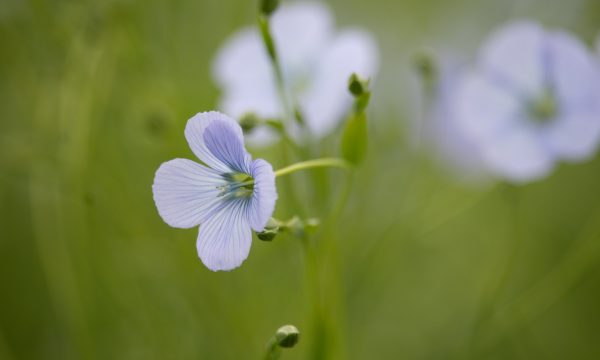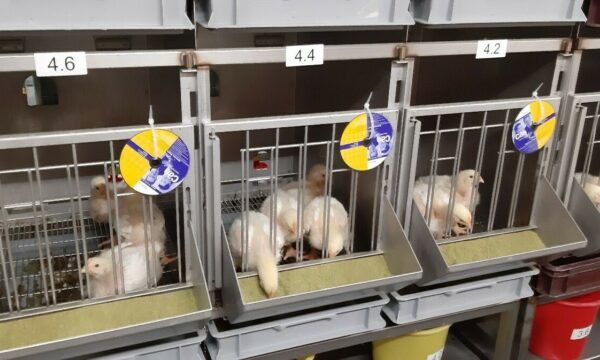Press release Underutilized fish (products) become valuable feed additives after ensiling

Fish by-products and landed undersized fish that cannot be sold for human consumption can be processed in a higher quality and more sustainable way than is currently the case. In particular, a specific silage technique makes it possible to stabilize the by-products of the (small) Belgian fishing industry, so that the high-quality fish proteins remain intact until the further processing steps. The technique has been fine-tuned by ILVO-UGent doctoral researcher Mike Van 't Land and evaluated nutritionally, biochemically, technologically and economically. The results are very promising.
More bycatch and fisheries by-products due to landing obligation
The European landing obligation (the so-called "discard ban") has increased the amount of bycatch that gets landed from commercial fishing boats. The vessels must also land undersized fish, which may not be sold for direct human consumption. However, other uses are allowed, such as processing into food supplements, animal feed or fertilizer.
Valorizing a fish byproduct is difficult because the product spoils very quickly, because the supply is diverse and irregular, and because the quantities in Belgium are relatively limited. Nevertheless, it is worthwhile because it contains many valuable animal proteins. Until now, the fish waste from the Belgian fish industry - heads, skin and other trimmings - crosses the border unprocessed and at very low prices to end up (low-grade) in biogas plants.
Good prospects in the animal nutrition segment
Researcher Mike Van 't Land asked himself two questions: Can we find higher-value applications for the larger amount of fish that is currently being lost while being a high-quality source of essential nutrients? And is the increasing demand for high-quality ingredients in the animal feed sector an opportunity? Worldwide, fish farming - with its associated residual streams - is on the rise, which is already visibly increasing the share of proteins from the sea in animal feed.
In the relatively small Belgian market, expensive process technology such as extraction of biomolecules did not prove a profitable option for processing the fish. In contrast, fish silage, a stabilization technique in which fish proteins are treated with organic acid, is a technically feasible and economically interesting route. The principle of fish silage is that the fish remains and the whole fish are placed in an acidic oxygen-poor environment.
Formic acid was an important element in the silage. Mike van 't Land: "We found that enzymes in the fish material broke down the proteins and fats into smaller components, resulting in a liquid 'soup' full of nutritional elements: proteins, peptides, amino acids, lipids, glycerol, fatty acids and minerals. The process yielded a nutritionally high quality but still quite unstable (subject to enzymatic deamination and fat oxidation) and 'wet' product."
Animal feed producers, however, want a stable and dried product. Therefore, work was also done on the later processing steps, such as pasteurization and drying into a stable feed additive. The trials showed that these steps were also technically feasible.
Possible substitute for (foreign produced) fishmeal or own niche?
The final product can gain a foothold in the Belgian market, according to a socio-economic explorative study. Compared to fishmeal, this powder does have a less efficient protein intake and a lower shelf life. But the experiments show that up to 50% of a high-quality commercial fishmeal can be replaced by a locally produced fish silage in shrimp feed, without any effect on growth.
Mike van 't Land: "We are not aiming to replace a high quality protein product like fishmeal. We'd rather launch a product that can be used as a low-cost feed additive. Fish silage can then be used to improve the digestibility, taste and mouth feel of feeds, while at the same time providing additional but locally produced proteins and fats."
Business plan in the making: Local proteins, local economy
Together with various stakeholders, a business plan is currently being developed to produce fish silage or other hydrolyzed fish proteins in Belgium. Such a local processing of by-products from the fishery could create a shift. Both the fishermen and the fish processors could possibly get a slightly higher price for their by-products. The different applications in feed are possibly a step towards valorization of the fish by-products in human food, as food additive or ingredient. Finally, research can be done on the technique of controlled enzymatic hydrolysis. This would result in "fish protein hydrolysate", a product with a higher market demand and price, but which requires higher investments.



